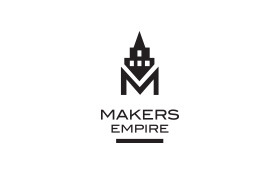
The potential of 3D printers crept into mainstream consciousness some years ago with some measure of excitement, curiosity and doubt. But there is little mystery to these devices.
“If you can use a tablet, you can design and print in 3D,” says Jon Soong, CEO of 3D printing design software company, Makers Empire.

3D printing is seeping into our vocabulary and its cost of entry is dropping. Meanwhile, tools to print 3D material are starting to gain visibility in Malaysia and other parts of the world.
Riding the wave, Australia-based Jon Soong and Roland Peddie of Makers Empire aim to make 3D modelling and printing as simple as possible.
The aim is to bring the youngest and oldest people on board this fantastic technology. Makers Empire is starting off at the primary school level in Australia and beyond.
It began when Peddie, Makers Empire’s chief technology officer, was working on open world games for the Xbox console. He noticed that a number of players spent more time customising their characters’ clothes, appearance and gangs than they did playing the actual game.
This convinced Peddie that people loved customisation and creation.
Soong and Peddie excavated that gold mine and took advantage of the new generation of tablet-friendly children by making a simple 3D printing app that is suited to touch screens.
Makers Empire’s app allows users to assemble simple shapes to build more complex objects.
Users can also drag, draw, write and import elaborate designs for modification. This is far from complex CAD (computer-aided design) software — often hair-pulling programs for those who may not have an IT background.
However, software alone is not enough to create an environment of accountability and growth amongst 3D design adopters. Makers Empire’s products aim to teach the teachers.
To ensure teachers and schools get real educational value from 3D printing, Makers Empire bundles its software with teaching resources in the only 3D printing learning program made in Australia for its students.
In August 2014, the Makers Empire Learning Program was launched and packaged to sell to Australian schools. After 24 months of gruelling planning and development, Makers Empire made its first sale in the same month.
The Learning Program is offered to schools at as low as A$3.75 per student. This includes a volume licensed software, professional development programmes, teachers’ portal, tech support and lessons and unit plans aligned to the Australian, UK and US national curriculums.
Since then, more than 10 schools across Australia have adopted the program.
“Supportive and innovative schools in an area are invited to join. They will then work closely with us to help develop the curriculum and software and also be able to demonstrate and share with neighbouring schools how 3D printing can be used in the classroom,” says Soong, whose family is from Malaysia.
Expansion to Hong Kong and the US is underway with the introduction of the software to five schools in the former and 30 schools in New York.
Here in Malaysia, the team has already signed an agreement with Malaysian education IT specialist, Pixsell.
Pixsell provides home-grown 3D printing hardware and Makers Empire’s software to education institutions such as Limkokwing University of Creative Technology in Malaysia and School of Science and Technology in Singapore.
“We want to continue innovating and improving our Learning Program and get to as many schools as possible across regions,” Soong adds.
As another source of revenue, Makers Empire has teamed up with US-based tech and toy company, Orbotix — the creator of Ollie, an app- controlled toy robot that is programmed for speed and fun tricks.
This collaboration with Makers Empire allows purchasers of Ollie to customise and modify their bots as they please. This includes adding accessories, Mohawks and camera mounts, to be printed and delivered for under US$50.
Most entry-level 3D printing programs for children incorporate some element of play and toy design.
It’s through toys that children can gain an understanding of the world and by having a free hand in creating the toys they play with, children now have more room for creativity.
Ultimately, Soong and Peddie want Makers Empire to be the first experience of 3D printing for everyone and a software that stays with them throughout their life.
“The most important reason is that 3D printing has the potential to be as world-changing as the computer has been over the last 25 years.
“Giving students an early experience with 3D printing will give them an advantage in the race for the jobs and careers of the future,” says Soong.
This article first appeared in #edGY, The Edge Malaysia Weekly, on February 16 - 22, 2015. Read more here
Save by subscribing to us for your print and/or digital copy.
P/S: The Edge is also available on Apple's AppStore and Androids' Google Play.
Print
Text Size
Share